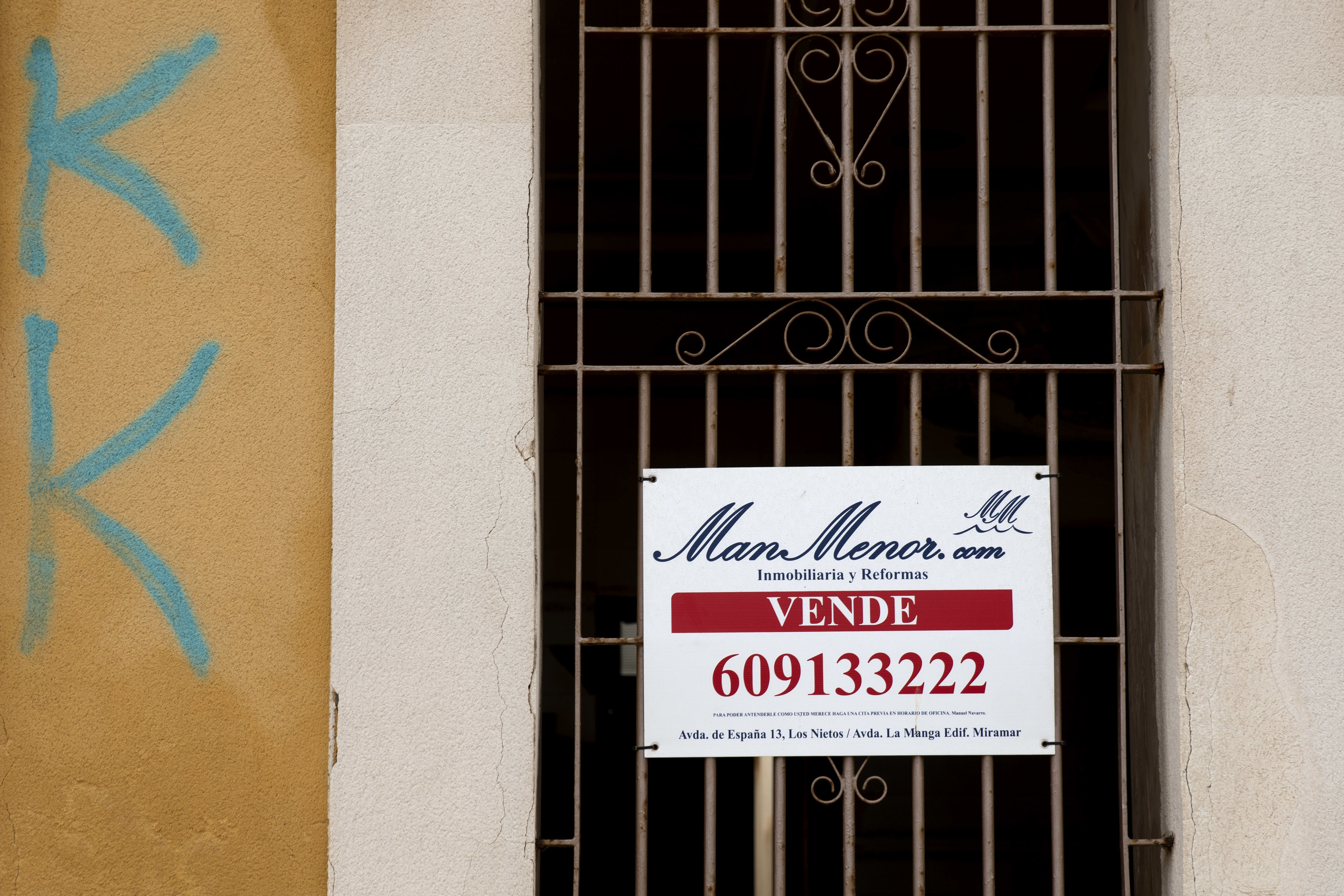"Everything has come together for us: the Covid, the economic crisis that affects employment and the Mar Menor. The latter is a shame and we hope that it will be solved quickly, because of course it affects demand."
María speaks from the Juan Galo real estate agency located in Los Alcázares, right on the bank of the Murcian lagoon.
This privileged environment has been going through an unprecedented environmental crisis for years that is already beginning to have consequences on the economy of the area.
The first, in the housing market.
A recent report by the
Bank of Spain
has studied how an ecological disaster such as that of the Mar Menor can have serious consequences on the economy of a region and the financial system. Its objective was to start from a specific case to warn of the serious economic consequences of climate change, scaling up the results of the analysis. It is not the first financial regulator to alert about this threat, but its research sets a precedent with data that illustrates what the impact of this type of phenomenon could really be.
The conclusion reached by the Bank of Spain is that the environmental degradation in the surroundings of the largest saltwater lagoon in Europe has already resulted in a loss of value of the properties in the area compared to neighboring regions such as the south of Alicante, notably affecting the wealth of homeowners in the region and becoming the embryo of a potential financial problem.
According to the data handled by the analysis, a house located in Torrevieja has appreciated on average 45% more in the last six years than another with similar characteristics located in any of the municipalities near the Mar Menor.
House for sale in the municipality of Los Nietos.ALBERTO DI LOLLI
The decline started in 2016 coinciding with the first of the great crises that have affected this natural environment with the appearance of thousands of dead fish on the shore. From there, the area begins to lose tourist attraction and, without it, the appetite of Spanish and foreign families to buy a residence on the land is significantly reduced. The main beneficiaries are the neighboring municipalities in the south of Alicante located on the Mediterranean coast. Until that moment, the Bank of Spain accredits that there had been no relevant differences in the evolution of prices in both areas after the crash caused by the 2008 crisis. Since the first ecological disaster, the difference in value exceeds
500 euros per square meter.
The question is how this price difference is then transferred to the families' pockets and whether, ultimately, it may be the source of a relevant financial problem.
The conclusion is that this risk would not exist in the case of the Mar Menor, as it is a small and isolated area, but it could entail a greater threat if as a consequence of climate change the sea level rose significantly and threatened other coastal nuclei from the country.
"To the extent that the materialization of climate change causes comparable environmental damage in other areas of the Levant of Spain, this analysis also indicates that the economic damage and its
implications for financial stability could be significant,
" the study warns.
In relation to wealth, the impact is immediate. The Bank of Spain estimates a loss of
4,150 million euros
in recent years for the owners of the 117,000 homes located in the Mar Menor, whose value as a whole exceeds 9,000 million euros. It is the same figure as in 2016, since the revaluation of these properties in recent years has been 0%.
It is explained by
Pedro Gurrea
, from the Boreal Real Estate located in San Javier. "Between 2016 and 2020 we did see a slower and more stable evolution of prices, but now we are seeing a strong recovery in operations." This connoisseur of the real estate sector says that it is difficult to separate the impact on the market that the pandemic has had from the environmental impact of the Mar Menor, but it takes away the problem and is confident of the potential of the area. "The Mar Menor has been in poor condition for years, but people keep coming and bathing. This year we have rented everything we had," he explains.
In the case of mortgages, the conclusions obtained from the study are quite similar.
The Bank of Spain concludes that between 2014 and 2021, the median mortgage in the Murcia region has remained stable at around 60,000 euros, while in the area near the south of Alicante it has doubled from 44,000 to 90,000 euros in the same period.
"The results suggest that an ecological deterioration such as the one described has the potential to significantly reduce the value of the collateral available, thus making it difficult to access credit in the affected areas," he warns.
According to the criteria of The Trust Project
Know more
Mar Menor
Alicante
Spain
Europe
Coronavirus
Beaches
HBPR
Covid-19A 'pandemic law' without stress, pros and cons of developing a new regulatory framework
Covid-19 The 200,000 Chinese blood samples that 'hide' the origin of the coronavirus pandemic
COVID-19 Epidemiologists Warn: "We hope the rebound does not cause another wave"
See links of interest
The Palm
Last News
What
Holidays 2021
2022 business calendar
Christmas Lottery 2021
Loteria del Niño 2022
Hertha BSC - Bayer 04 Leverkusen
Real Zaragoza - Sporting de Gijón
Valencia CF - Atlético de Madrid
Casademont Zaragoza - Coosur Real Betis
West Ham United - Liverpool

